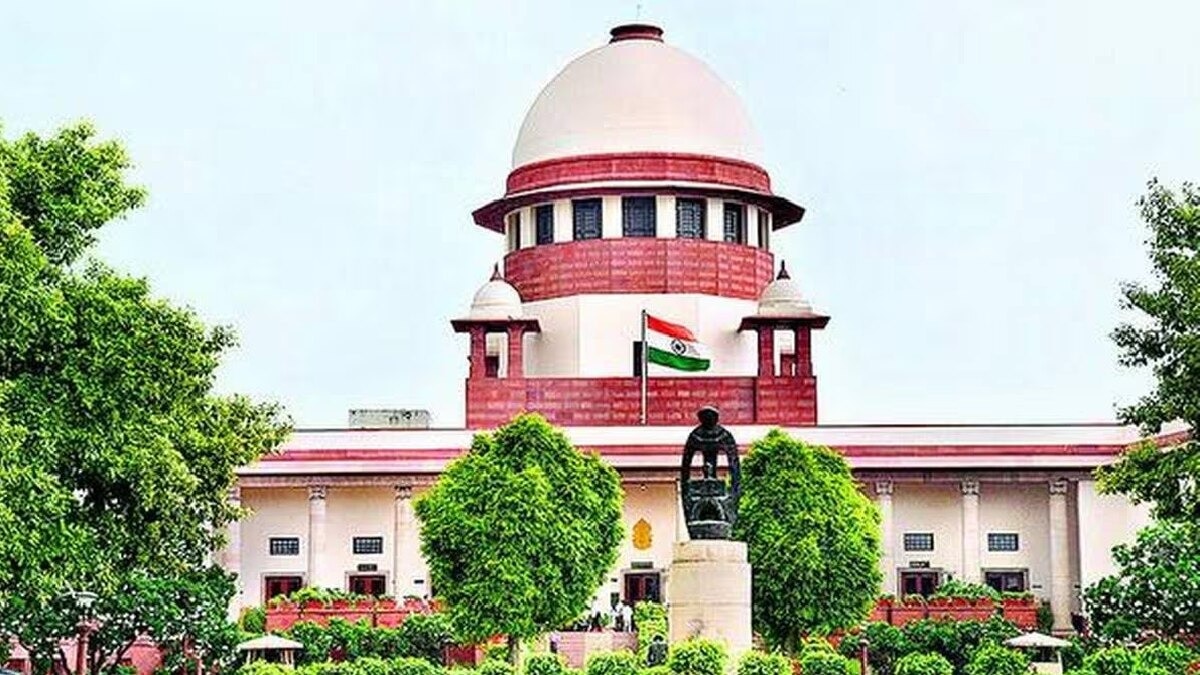Thursday is a very important day in the quota within quota case. In this case, the 7-judge Constitution Bench headed by CJI DY Chandrachud will give its verdict after 10 am. Today it will be clear whether quota within quota can be given by the states to provide reservation in jobs or not? The Supreme Court is going to give its verdict after examining its 2004 decision.
In its 2004 decision, the Supreme Court had said that the states do not have the right to create sub-categories of SCs and STs for providing reservation. Once again, the main issue before the Supreme Court is that of sub-categories (quota within quota) within the SC and ST categories. Now the court will tell whether the SC and ST categories will get reservation in sub-categories or not? Do the state assemblies have the right to implement quota within quota or not?
The Constitution Bench of the Supreme Court comprises of CJI DY Chandrachud, Justice BR Gavai, Justice Vikram Nath, Justice Bela M Trivedi, Justice Pankaj Mithal, Justice Manoj Mishra, Justice SC Sharma. The petitions have sought a review of the decision of EV Chinnaiya vs Andhra Pradesh Government. In 2004, the verdict in this case was given that all Scheduled Caste communities come under a homogeneous class.
Related news
What is the whole matter….
In fact, in 1975, the Punjab government introduced a reservation policy for Scheduled Castes by dividing the reserved seats into two categories. One for Balmiki and Mazhabi Sikhs and the other for the rest of the Scheduled Castes. This rule remained in force for 30 years. After that in 2006, the matter reached the Punjab and Haryana High Court and the Supreme Court’s 2004 decision in the EV Chinnaiya vs State of Andhra Pradesh case was cited. The Punjab government suffered a setback and this policy was canceled. The Chinnaiya decision said that sub-categories within the SC category are not allowed. Because it is a violation of the right to equality.
Later, the Punjab government enacted a new law in 2006 to provide quota to Balmikis and Mazhabi Sikhs, which was again challenged in the High Court in 2010. The High Court struck down this policy as well. The matter reached the Supreme Court. The Punjab government argued that this was permissible under the Supreme Court’s 1992 decision in Indra Sawhney vs Union of India, which permitted sub-categories within Other Backward Classes (OBCs). The Punjab government argued that this should be permitted within Scheduled Castes as well.
In 2020, a five-judge bench of the Supreme Court found that the EV Chinnaiah vs State of Andhra Pradesh judgment, which held that sub-categories within the SC category were not permissible, should be revisited by a larger bench. A seven-judge bench headed by the CJI was then constituted, which heard arguments in the case for three days in January 2024 and then reserved its verdict.
What is the provision in the Constitution?
While granting special status to Scheduled Castes and Scheduled Tribes, the Constitution has not mentioned the castes and which castes will come under it. This right lies with the Centre. According to Article 341, the castes notified by the President are called SC and ST. A caste notified as SC in one state may not be SC in another state.
How many Scheduled Castes in the country?
According to a report, according to the annual report of the Ministry of Social Justice and Empowerment, there were 1,263 SC castes in the country in 2018-19. No community was marked as Scheduled Caste in Arunachal Pradesh, Nagaland, Andaman and Nicobar and Lakshadweep.
only the president has the right
In 2005, in the EV Chinnaiya vs State of Andhra Pradesh case, the Supreme Court had said that only the President has the right to remove and add castes in the list of Scheduled Castes. The Constitution considers all Scheduled Castes as a single homogeneous group. If all Scheduled Castes are considered as one group, then how can there be sub-classification. Scheduled Castes have been provided special protection on the basis of social inequality, because there was a feeling of untouchability against these castes. To ensure that the benefits of reservation reach the needy i.e. the weakest section of the reserved castes, the Supreme Court implemented the concept of creamy layer. It was implemented in the decision of Jarnail Singh vs Lakshmi Narayan Gupta case in 2018. The rule of creamy layer applies to OBC (Other Backward Class). Whereas it was applied to Scheduled Castes in the case of promotion in 2018. The central government appealed for a review of this 2018 decision and the decision on it is yet to come.

